PRESENTED BY THE

FEATURING COTTAGE REGULATIONSFOOD AND MORE!



































































PRESENTED BY THE



































































Dahline Poultry incubates an entrepreneurial spirit
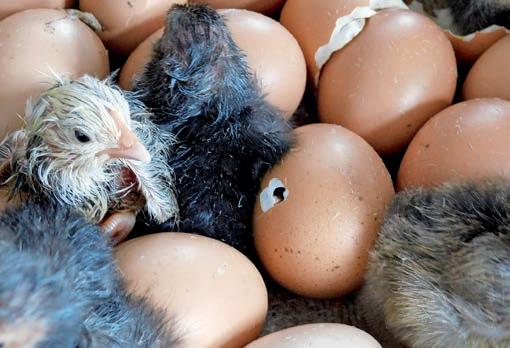
Wasps are a gardener’s friend when it comes to pollination .......................................................................................
Cottage food is a revenue opportunity for farmers and producers ..................................................................................
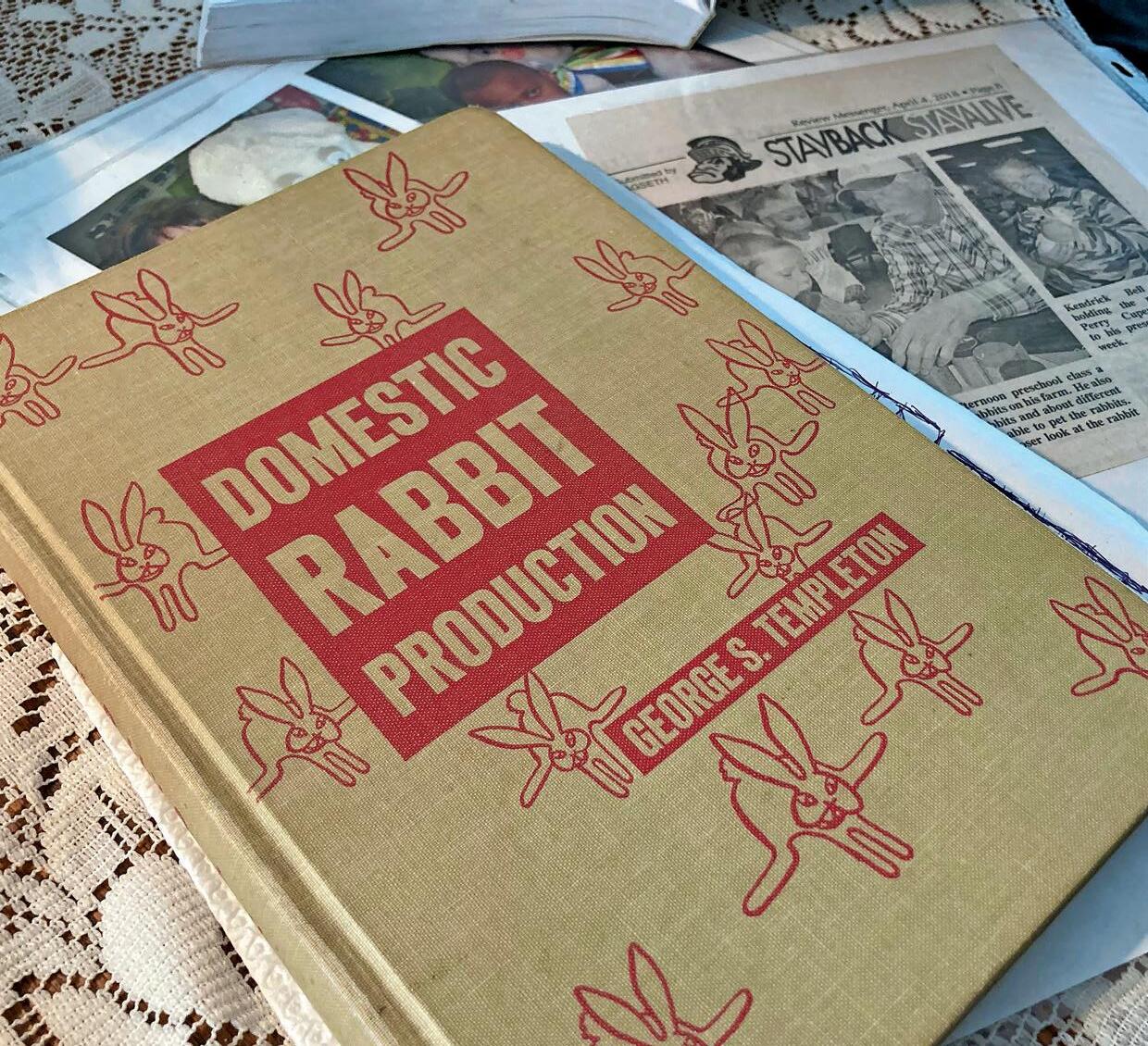
U.S. native seed shortage hinders land restoration
Wierschkes meeting a need for halal-certified meat in Minnesota.....................................................................................
Southern Minnesota farmers growing a food-grade oats market .......................................................................................

Women in Ag Conference encourages meeting challenges with resilience .........................................................

Meat rabbit producer holds onto a niche market
Farm incomes fall in 2023 after hitting record highs
PUBLISHER: Steve Ammermann
EDITOR: Kelly Boldan

MAGAZINE EDITOR: Kit Grode
AD MANAGER: Christie Steffel
MAGAZINE DESIGNER: Jamie Holte








































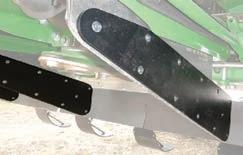




 By Shelby Lindrud | West Central Tribune
By Shelby Lindrud | West Central Tribune

ATWATER — As the tape seal was peeled off the door of the egg incubator, the soft “cheep, cheeps” from dozens, if not hundreds, of newly-hatched chicks started to rise in volume, indicating another successful hatching at Dahline Poultry. These chicks would soon find themselves being shipped across the country, following thousands before them.
“Right now we are shipping anywhere from 10,000 to 15,000 a week,” said Hunter Dahline, the 18-year-old owner and founder of Dahline Poultry with facilities near Willmar and Atwater. “I never thought we would ever be this big, ever.”
Dahline Poultry was started in 2018, when its young founder was only around 14 years old, but his interest in chickens began earlier.
“I’ve been into chickens since I was 12,” Dahline said. His grandparents had an old egg incubator on their farm and Dahline decided to give it a try. “I wanted to hatch some chicks. It took off from there.”
He first started with just selling eggs from his hens, but soon understood it wouldn’t make a financially successful enterprise. He also began to see that customers were interested in buying live chicks and were coming back to do business again and again.
I NEVER THOUGHT WE WOULD EVER BE THIS BIG, EVER. - HUNTER DAHLINE
“It gave me a passion to want to do it,” Dahline said, adding he always had a bit of an entrepreneurial spirit and thought he would one day run his own business.
Dahline Poultry hatches and ships eight different breeds of chicken. The two most popular breeds are the Cornish Cross for those looking for a meat bird and the Red Sex Link for a laying hen.
“They are the ones that sell the best,” Dahline said. Most of the layer flocks, which produce the eggs for Dahline Poultry, are raised on Amish farms near Clarissa, while another 300 birds are kept on the home farm near Willmar.


“They raise the birds for us and we collect the eggs off the farm,” Dahline said. “We have about 2,000 total.”
Once the eggs are brought to the hatchery they are cleaned and/or sanitized if needed and then placed into the larger incubator, which can hold up to 14,000 eggs at one time. Currently the Dahline Poultry hatchery is located in a rented space near Atwater. Dahline said the purchase of the larger incubator made it necessary to find a larger location.
Dahline hopes to build his own hatchery building soon.

“We plan to keep expanding,” Dahline said.






The eggs are kept in the larger incubator for about 18 days before they are moved to a smaller machine for the remaining few days of the 21-day incubation period. Then suddenly hundreds of eggs become hundreds of chirping

chicks. Within a few days, weather-permitting, those chicks are off to their new homes.
“Then we get them boxed up and the chicks are shipped through the postal service,” Dahline said.
It may seem odd to hear that live animals are shipped through the United States Postal Service. Dahline said he and his crew keep an eye out on weather across the country, to make sure the birds are shipped properly. He says it is imperative to have a good relationship with the post office. Without it, things can go very wrong.
“You need to work with them, not against them,” Dahline said.
Dahline Poultry started on good footing that has only gotten better as its grown. Dahline can barely keep up with orders and saw a major jump in sales for meat chickens when the pandemic hit and then a massive increase in laying hen requests as egg prices skyrocketed over the last year.

“I can’t hatch enough chickens,” Dahline said. “The customer feels like they’ve got to know where their food comes from, which I think is a good thing.”
Once the chicks are shipped out, Dahline Poultry has no further responsibility for the birds. That’s not to say that Dahline doesn’t keep an eye on how his birds do.

“I stay connected with the customers. That is one thing I’ve learned, you have to treat them like family,” Dahline said. “Without them, I won’t have a business.”
Dahline hasn’t made the business a success on his own. A network of family and friends have been instrumental in helping him run it, and also teach him about owning a business.
“It took a lot of help from my parents,” Ben and Sue Dahline, Dahline said.
Assisting with the day-to-day operations of Dahline Poultry are three other ACGC seniors — Connor Foltz, Brent Johnson and Keegan Kessler-Gross.

“We all work pretty well together,” Dahline said. Another major help as been ACGC Schools. The district has allowed Dahline to take time to care for his business, even if it sometimes overlaps with class.
“The school has been so understanding in what I am doing and flexible,” Dahline said.
As Dahline looks forward to his high school graduation this spring, he is already making plans for the future, which he believes Dahline Poultry will feature greatly. This upcoming fall, once the hatching season is done, Dahline plans to travel to other hatcheries and continue building relationships with others in the business. He hopes to learn from them and see if there are ways he could make his business even better.
“Be friends with your competitors, not enemies,” Dahline said.
For those wanting to start their own business, whether they are teenagers or not, Dahline has simple advice: get out of bed and start the day.
“You have to be willing to wake up in the morning and put your mind to do something,” Dahline said.
The advice seems to have worked for Dahline, who said he is normally up by 5 a.m. and ready to do what he must to make his life and business a success.
“You have to want it,” Dahline said.










When you think of wasps, you probably think about trying to enjoy food or drink outside on a warm fall day and being bothered by yellowjackets. Maybe you think of getting stung. These experiences are common and make it easier to disregard (or disdain) a class of insects that do Minnesotans a lot of good.
Wasps: More than an outdoor dining pest
The last few years have brought a new appreciation for the wide diversity of bees in Minnesota. Wasps have similar diversity, and arguably provide even more beneficial services than bees. The yellowjackets and paper wasps that spike many people’s anxiety are only a small portion of the wasp species seen in Minnesota.
Big wasp, small wasp, yellow wasp, blue wasp
Wasps include more than just yellowjackets and hornets. Like bees, some wasps are social and live in colonies, while others are solitary. There are approximately 103,000 species of wasps in the world. Only 1,000 of these are social, while the others are either solitary or parasitoids (more info on that later).
These wasps help the world’s ecosystems function, as wasps pollinate flowers, control pests, spread seeds and help decompose carcasses. They inspire artists (Antman and the Wasp anyone?) and in other parts of the world, are eaten as a delicacy. As we learn more about bees and how useful they are, it is only fair that we give some love
to their often misunderstood, but equally helpful, relatives — wasps.
Every wasp species helps Minnesota ecosystems (and gardens) function

Wasps pollinate.
Wasps’ fuzzier relatives, bees, often get credit for all pollination. Studies have shown that wasps are also good pollinators, and in some cases even step up and pollinate plants when bees are absent. Great black wasps are solitary wasps responsible for some pollination in Minnesota and individuals are often found on flowers.
Wasps help control garden pests.

People often think of wasps as aggressive, and some insects probably share this feeling. Many wasp species feed on a wide variety of food sources, ranging from nectar and pollen to other insects. Some wasps are very targeted in what they hunt, seeking out and feeding on only one species of insect. Other species of wasps are generalists, meaning they will feed on whatever insects are available.
Social wasps, like yellowjackets and hornets, feed on a wide variety of insects, with studies finding social wasps eating caterpillars, beetles and flies. One study in New Zealand tried to figure out how many pounds of insects a species of social wasps was hunting and eating, eventually estimating that the wasp colonies were eating an average of 2.12 pounds of insects per 2.47 acres. That’s a lot of bugs!
Solitary wasps may feed on other insects too. The great black wasp is also called cricket or katydid wasp, because they will feed their young crickets and katydids. Wasps help control invasive species.
Emerald ash borer is an invasive pest with major consequences for Minnesota’s forests and neighborhoods. Maybe your neighbors have been preventatively removing or treating their ash trees to protect trees, people and property from this pest. One option for longer-term control and slowing its spread, especially in Minnesota’s forests, are species of parasitoid wasps.

A parasitoid wasp is a wasp species with a specialized life-cycle. They target another species of insect and lay their eggs inside of them. The eggs hatch and the larvae feed on the other insect from the inside out, killing the host insect when they become adults (if this makes you think of the scene in the film Alien, you aren’t too far off). These wasps are great at controlling pests because they are often specialized to lay eggs on one singular species. A bonus is that they are small and solitary, which means they aren’t defensive of a colony, do not sting humans, and aren’t usually noticed by people. Three parasitoid wasp species have been released in Minnesota to try to control emerald ash borer.
There are similar efforts underway to find wasps to help manage another unwelcome fall visitor, the brown


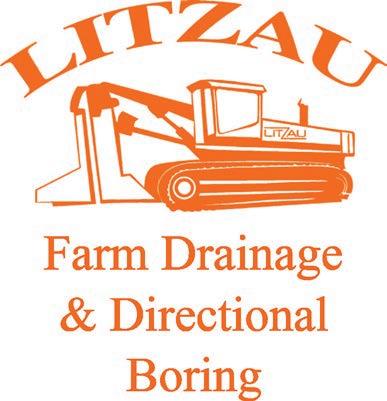

marmorated stinkbug, as well as the berry menace spotted wing drosophila.
Okay, but why won’t they leave me alone come fall?
The only wasps bothering you in the fall are a small subset of Minnesota wasps, the social wasps.

Unlike honeybees where the goal of their social society is to have all members make it through the winter, only a yellowjacket queen makes it through winter. By the time the fall rolls around, the wasp colony contains thousands of members, and food supplies often aren’t adequate. This leads workers to aggressively scavenge for food, which often leads them to our food.
It is easier to modify our behaviors than get the wasps to modify theirs. Keeping calm and ignoring the wasps limits potential stings.
Yeah, but I still don’t want them near my house.
Totally fair, especially if the nest is in a high traffic area. This is a good time of year to keep an eye out for yellowjacket nests, as they start small and will be much easier to deal with than if you try to tackle the problem later in the year. For tips on removing different types of wasps nests, see the University of Minnesota Extension webpage about wasps and bees.
Again, keep in mind that our social wasp colonies survive only one year. The workers die in freezing temperatures while mated queens leave their old nests and search for protective places to spend the winter. This means winter is a great time to remove visible wasp nests, because they are vacant at that point.
The northern giant hornet (aka murder hornet), has not been found in Minnesota, and only has been found in a small area of Washington state.
There are some native insects that may seem similar. The cicada killer wasp is also very large. Cicada killer wasps are not dangerous, even though they can look intimidating. Females don’t instinctively protect their nests and generally ignore people. They can sting, but only do so if threatened. Males display aggressive behavior, but lack a stinger. Cicada killer wasps play a role in our Minnesota ecosystems by bringing cicadas down into their nests in the soil and feeding on them.




WILLMAR — Customers to any of the dozens of farmer’s markets that pop up across the region during the growing season are bound to find a cornucopia of not only vegetables but jams, jellies, salsas, sauces and baked goods to match any sweet tooth.

Prior to 2015, it was a different story. It was rather challenging to sell homemade goods in Minnesota without a license, which could add many layers of rules and regulations to the process. However, that changed when the Minnesota Cottage Foods Law was passed.
“The passage of the law opened up opportunities for Minnesota growers and entrepreneurs to contribute to

their livelihoods,” said Amy Johnston, University of Minnesota Extension food safety educator.
Johnston and fellow food safety educator Cindy Hale gave an overview of the Cottage Food Law at the 2023 Extension Women in Ag Network Conference held Feb. 7 in Willmar.
“There are a lot of shoulds,” Hale said. “You need to know what are the musts, what are the things you have to do.”

The law allows people to produce homemade goods in their own kitchens and then sell them directly to consumers without having to have a food handlers license. There are rules a cottage food producer must follow — and training to go through — but it is a far easier process to go through than other food licensing.






“It is not a high bar, but gives you the skills you need to feel you are doing it right,” Hale said.



For starters, cottage food producers are only allowed to sell what are considered non-potentially hazardous (NPH) foods. This means the finished products don’t support the growth of bacteria or don’t have to be kept at a certain temperature (either hot or cold) to remain safe. Goods that are considered NPHs are usually acidic, dry or contain high amounts of sugar or salt.
“It is food that doesn’t make somebody sick when they eat it,” Johnston said. “There is a whole range of non-potentially hazardous foods.”
To make sure a food product is a NPH, the state has two ways of measuring it, and a cottage food producer must follow at least one of them. The first is that the finished product as a pH level of 4.6 or lower, meaning it is acidic. The second is water activity of 0.85 or less. This is usually doable for food that is dry or has a high sugar content.
“Most baked goods, they meet the criteria of being NPH by meeting the low water activity,” even though they usually contain eggs and dairy, Hale said.
PH can easily be tested at home with an affordable tester. Water activity can be a little bit more difficult as water activity meters can be very expensive. Instead, Hale recommends finding a lab that will do the testing for you.
The Minnesota Cottage Food Producers Association keeps an updated list of foods that are considered NPHs and can be sold as cottage foods. It is not an exhaustive list, and new foods are occasionally added. The list gives producers an idea of what can and can’t be sold as cottage foods, and ways to produce food that does fit under the requirements.
“There are a lot of different culinary and cooking skills sets among our producers and growers,” Johnston said. “Having this diverse list of foods you can make and sell really helps expand the variety.”
Food that is excluded from the cottage food exemption are dairy, eggs, fish, meat, poultry and seafood because they require additional safety precautions to be safe to eat. There are other licensure requirements to sell these kinds of foods.
Some food products — such as eggs, meat, honey and maple syrup — might fall under the Product of the Farm exemption, which allows producers to sell it without a license. The Minnesota Department of Agriculture has an online tool called the Food Licensing Wizard to help potential producers see if they need a license or not to sell their product.

To be law-abiding, cottage food producers must register with the Minnesota Department of Agriculture and take the training to become an either Tier 1 or Tier 2 producer.
The tier a producer falls into depends on the annual gross sale of the cottage food business. The 2021 amendment to the law updated the revenue levels. Tier 1 is for producers with annual gross sales less than $7,665, while Tier 2 is for sales from $7,666 to $78,000 annually.
“It allows cottage food producers to more substantially contribute to their farm’s bottom line,” Johnston said.
To be a Tier 1 producer, a person must complete a self-guided training course, which Hale explained is little more than a PowerPoint presentation. The Tier 1 training is free and needs to be retaken annually. There is no annual registration fee for Tier 1 producers.
“The hurdle is not high at all to get into Tier 1 cottage food production,” Hale said. “That is the best place to start.”
The training for Tier 2 is a little bit more involved — a four-hour online, self-paced program. The training is $50 and needs to be retaken every three years. There is also an annual $50 Tier 2 registration fee.
Hale said the training for cottage food isn’t too complicated no matter which tier the producer ends up registering for. That is mostly because the state trusts that farmers, bakers and other cottage food producers know what they are doing.

“Producers, especially growers, you get food safety,” Hale said. “You are not going to be out there doing stupid stuff.”
The label of the product being made and sold is also important. The state has mandated information that must be included in all the food labels of a cottage food product. The label must have the name of the registrant (not their business name, but their actual name), either their address or their registration number, the date the food was prepared, a list of all ingredients and a list of all possible allergens including things such as sesame, eggs, wheat and peanuts. If a producer is using any ingredients that have their own ingredients, those have to be listed as well.

“It is important to list sub-ingredients. Especially things that can have secret allergens in them,” Hale said. “Spices and oils often can be lurkers with secret allergens.”
The last required piece to the label is the disclaimer that reads “These products are homemade and not subject to state inspection.” Hale said the words must be on every product that is being sold as cottage food and needs to be in a font that is readable.
If the producer wants, they can add more information to the label such as their business name, the name of the product and even the pH level of the food. Hale said customers love talking to the producers about the food, so the label is the perfect tool to start those conversations.
“Use your label as a way to provide information to them, meet your regulatory requirements and engage your customers,” Hale said.
While registering to be a cottage food producer may not be all that hard, both Hale and Johnston said people might have questions. There are many places to find information about what is and isn’t allowed for cottage food. MDA has a question and answer section about the rules of cottage food; there is the Minnesota Cottage Food Producers Association and the Minnesota Farmers Market Association; and, of course, there is the University of Minnesota Extension.

Both Hale and Johnston are new to their positions, but they have a lot of ideas to better educate the public on not only cottage food but a whole list of food topics. Over the next year, they hope to increase the amount of outreach they do.
“We are the unwrinklers,” Hale said. “One of our goals in the next year is to work really closely with local educators.”
The United States is facing a shortage of the native seeds it uses to restore natural habitats damaged by wildfire and other weather events made worse by climate change, according to a report released Jan. 26, 2023, by the National Academies of Sciences, Engineering, and Medicine.
Extreme weather events, especially wildfires, are causing increasingly severe damage, something the Biden administration recognized last July when it tripled funding for U.S. Forest Service reforestation efforts.
But the country’s supply of native seeds, plants, and trees is insufficient to meet the needs of agencies like USFS or the Bureau of Land Management, the top user of native seeds, which commissioned the NASEM report.
“The federal land-management agencies are not prepared to provide the native seed necessary to respond to the increasing frequency and severity of wildfire and impacts of climate change,” the report said.

A BLM spokesperson said the agency was still reviewing the report and could not comment on specific findings, but director Tracy Stone-Manning said NASEM’s recommendations “represent an important opportunity for
us to make our collective efforts more effective.”
A USFS spokesperson said the agency is looking at ways to increase its replanting and seed procurement capacity.
Native plants are best for habitat restoration and often preferred by agencies, states, and tribes because they are well adapted and beneficial to local animals and insects, said Susan P. Harrison, an environmental science and policy professor at the University of California-Davis and the chair of the committee that wrote the report.
“Native plants have been there for thousands of years,” she said. “Their potential to keep persisting into the longer term has been fairly well tested.”
But native seed suppliers have been strained in part because major buyers like BLM tend to make purchases in the wake of emergencies, making demand inconsistent, Harrison said.
Agencies should take a more proactive approach to restoration and collaborate on native seed policies, the authors recommended.
“Time is of the essence to bank the seeds and the genetic diversity our lands hold,” the report said.


Agricultural truck wisdom from our plant to yours.

Farming is more than an occupation. It’s a way of life. It’s not just 9 to 5. It’s 24/7. It’s a lifestyle we understand. That’s why the Ram Brand is as committed to helping you as you are to farming. Ram Agriculture Experts across the country participate in ongoing training designed and delivered by your fellow farmers making them better prepared to serve you than anyone else in our field.
The resilience of our farmers is what pushes us forward. They are ready for anything-the next project or harvest. It’s hard work, and Ram trucks help them get it done no matter what comes their way. Our trucks and our partnerships are all your success! To those who are up before dawn and won’t’ stop until the work is done!




We are here to help you and serve you!

Monday - Wednesday 09:00AM - 06:00PM
Thursday 09:00AM - 08:00PM
Friday 09:00AM - 06:00PM
Saturday 09:00AM - 04:00PM Sunday Closed





WILLMAR — With one success under their belt, it might not be a total surprise that the owners of the first USDA-inspected mobile poultry processing facility in the country would also be behind the first halal-certified goat and sheep slaughter facility in the state of Minnesota.
“The closest halal plant is Chicago,” said Greg Wierschke, and there is a growing unmet need in and around Minnesota for a slaughter facility that can process goat while following the standards of halal.
Greg and Becky Wierschke, founders and owners of Clean Chickens and Co. in Elk River, know that it is a big jump from processing chickens to processing goats. They believe the hard work and creativity that made Clean
Chickens a success will serve them will in their newest endeavor — Happy Halal in Willmar.
“It’s not just saying ‘we’re not going to be slaughtering pigs,’” Greg said of keeping the facility according to halal. It’s also about completing the multiple steps and keeping the promises.


“The bottom line is you want to help the community and meet the needs the community has,” Becky said.
The Wierschkes have more than 20 years experience growing and processing chickens, and started their operation on their farm near the Red Lake Reservation. At first the couple raised the birds, but would then have to drive nearly six hours round-trip to get them processed at the

nearest processing facility in Brainerd.


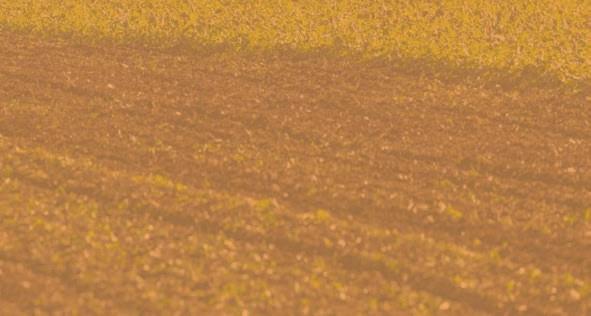
They soon started processing their own birds.
To meet the educational needs of their deaf daughter, the family made the move to Elk River. Greg started raising a small number of chickens on their property, and then purchased a few pieces of mobile processing equipment.
Greg figured he would do a few processing jobs at other farms, just to pay off the equipment. Instead, Clean Chickens and Co. was born.


That first year, the business processed about 500 birds and then for the next three years the number of birds would double. When COVID hit, Clean Chickens saw business go through the roof.
“We went to almost 20,000 (birds),” Becky said.
The business is inspected by the USDA, which allows growers to sell their processed birds to restaurants, stores or across state lines. Clean Chickens will travel throughout Minnesota and Wisconsin to process birds directly on farm sites.

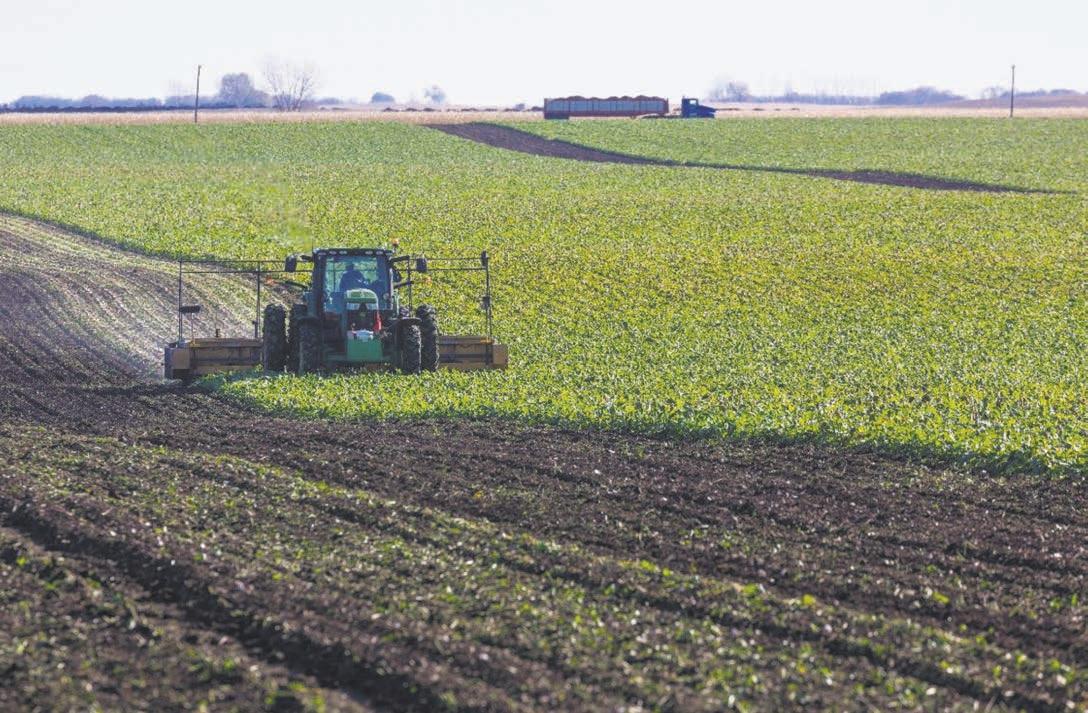
Over the last several years, the Wierschkes started following the growing need for halal slaughtering of goats and lamb in Minnesota. State agencies had done multiple need assessments, but no one seemed interested in taking on the challenge.
Around the same time, the couple started having discussions with Tiffany Farrier, owner of Kandi Acres in Hawick. Farrier had been raising halal goats but was finding it difficult to locate butchers willing to slaughter the animals using halal methods. She urged the Wierschkes to take the leap and expand into halal slaughtering.
“We were able to put some funds together and do that feasibility study and really start doing some serious research on that potential,” Becky said.
The Wierschkes also had to learn about halal and the steps they would need to take to make sure their product was acceptable to the Muslim communities across the state. There is much diversity in Islam, and Muslims from different regions may follow halal in different ways. Meat that is considered halal is produced according to Islamic religious text and allowed to be consumed by Muslims.
Halal has covering the raising of the animal, what it can be fed, how it is slaughtered, processed, transported and stored. Halal animals can have no contact with pigs or other forbidden animals — or product made from those animals — at any stage of its life and during or after slaughter.
By Minnesota law, Happy Halal must prepare its product in compliance with the laws and customs of Islam or it cannot be called halal.
The Wierschkes have assisted with a halal slaughtering of poultry down in Rochester. While there, the couple saw many similarities in how they process the birds in other jobs.
“We call it clean culling,” and it usually includes not stunning the bird before it is killed, Becky said. “It was treating those birds with a respect and reverence.”
Following all the research and learning, the Wierschkes decided opening a dedicated halal-certified slaughter facility for goats and sheep could be a solid business idea.
“You have a population that is growing faster than any other population in the state, and no one is fulfilling that need,” Greg said.
Once the decision had been made to move forward with Happy Halal, the Wierschkes needed to find a location. They knew a new facility would have to be built.
“To find any meat processing plant in Minnesota that hasn’t had a pig go through it? Good luck with that,” Greg said.
They looked around the state for a suitable location, at first avoiding municipalities as they believed a slaughter facility within in city limits would be a hard sell. However,
they found all they were looking for in Willmar. The Industrial Park had the land and the utilities needed to construct the facility, while the city itself could provide the workforce and a customer base.
“It fits Willmar well,” Greg said. “The local perception is that it’s not all bad.”
The couple is in the process of purchasing two parcels in the Industrial Park, near the new FedEx facility. Greg said they hope to start construction this spring and be open in the fall. Happy Halal will be a small facility, only 4,000 square feet, with a daily capacity of 100 goats or sheep.
“It is really not that big,” Greg said.
To become officially certified as a halal processor, the Wierscheks will be working with Halal Transactions of Omaha. The organization will inspect the facility to make sure it is following halal, and will certify the plant if it does so. The certification is renewed annually.
“They have very specific standards you have to abide by,” Becky said.
Probably the most important building blocks in the entire process are the relationships the Wierscheks are building with the diverse communities in Willmar. While halal is a tenant of Islam, it is not only Muslims who are interested in locally processed goat. The Wierscheks have been having conversations with many of the restaurants and businesses in Willmar about their plans.
“Culture is beautiful if you aren’t afraid of it and understand it,” Becky said.
There have been questions about the proposed business raised by some in the Muslim community, the Wierscheks said. The main concern is clearing up any confusion over whether Greg will be slaughtering the goats or that the slaughter will be done by machine. The answer to both questions is no.
“They just need to be reassured that Greg is not slaughtering,” Greg said.
Instead, Happy Halal will be employing members of the Muslim community to run Happy Halal. All animals slaughtered at Happy Halal, which will just be goats and sheep, will be done by hand and following the tenets of halal.
“It is really in the community’s hands if we are going to get halal (certification),” Greg said.
Both Greg and Becky have enjoyed building relationships with the business owners and residents of Willmar. They want to assure everyone interested that they plan for Happy Halal to be for the community, and it will be a true halal facility.
“It is really about trust, it boils down to hope,” Becky said. “The intentions behind this plant as designed is truly for the community. I assure you it is.”

BYRON, Minn. — What started out as some southeast Minnesota farmers discussing conservation practices has evolved into a marketing group for food-grade oats.
The group of farmers in the Byron area, just outside of Rochester, started looking at a third crop to add to their corn-soybean rotation and started seeing some success as well as better corn yields.
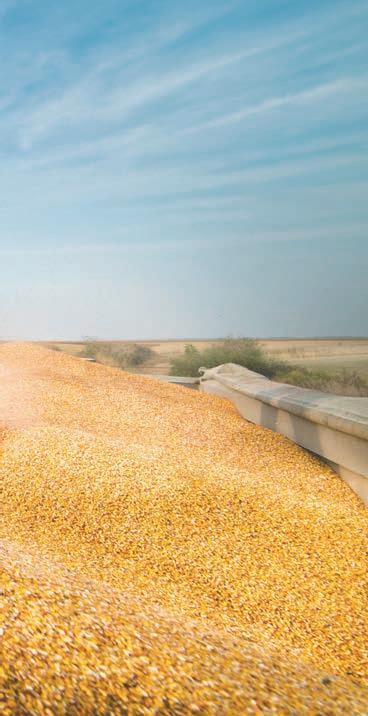
The oat acreage is still pretty small, but with a dozen farmers pooling some resources and know-how, they are growing enough oats to help supply a processing plant in the region needing food-grade oats.
Martin Larsen, of Byron in Olmsted County, said the group doesn’t even have an official name yet.
“We’re still in the beginning stages of really making
something out of this in the next few years,” Martin said. “But we went from nothing, two years ago — not organized, just individuals working on our own — to aggregating 1,000 acres last year.”
A big break has come with working with a non-profit organization that has helped provide funding for a key piece of equipment — a grain cleaner to help meet the standards of food-grade oats.


They also have lined up use of a grain-handling facility for blending oats and centralized shipping.

“So really the speed at which it’s moving is pretty impressive, but yet calculated enough that we’re not going to go off the rails with it,” Larsen said.

Martin said the group would like to grow to 1 million

bushels in the next five or 10 years, which will mean adding more members.

Another one of the current members is Tom Pyfferoen of Pine Island.
He started growing oats on fields near some pasture for his beef cattle. After the oats are harvested in the summer, he planted clover as a cover crop and some more acres for his cattle to graze or maybe some extra hay.
But he was surprised at how good some of his oat yields were, with the added benefit of much better corn yields — he said an extra 20 bushels per acre for the first couple of years after being planted to oats.
He said oats was “something to kind of spread the workload,” with low input costs and a way to improve the soil health on some of his more challenging fields.
He said the marketing group may have 2,000 acres in 2023, producing about 200,000 bushels.
Once popular in the upper Midwest, oats acreage has shrunk over the decades, and most local elevators don’t generally deal with oats.
But oats have been on the upswing in the last decade. In 2022, the U.S. Department of Agriculture estimates that oat production was at 57.7 million bushels, up 45% from 2021. Yield was estimated at 64.8 bushels per acre, up 3.5 bushels from the previous year. About 890,000 acres of oats were harvested, 37% above the previous year.
New for oats growers in 2023 is revenue protection through the USDA’s Risk Management Agency. Previously, oats were insured under the Actual Production History plan of insurance.
The upper Midwest still leads the U.S. in oats production but most oats are grown in Europe and Canada, with the U.S. as a huge export market for Canadian oats.
But those U.S. oat buyers will buy more locally sourced oats.
Pyfferoen said now that the group has some critical mass, the oat processors are coming to the table and offering some good contracts.
“But it’s not a contract that every grower out there can handle because he doesn’t have the infrastructure,” Pyfferoen said.
But with storage, a grain cleaner, shared trucking and some shared fieldwork, the group can fill orders with more confidence.
Larsen, who in 2022 helped combine some of the oats for his neighbors, said the other resource that the group shares is information about how to grow oats.
“Most haven’t grown oats in a long time,” Larsen said, adding that they can share information from the tractor or combine about what they are seeing for crop and field conditions.
The key grading factor for oats is test weight, with the target being 36 pounds per bushel.
If a member of the group has some oats that are a little light, cleaning them or blending them with another grower’s heavier harvest can help reduce the marketing risk.
The grower with the light oats would still have to take a discounted price, but better than having the crop go as livestock feed.
“It’s still protection,” Larsen said.
The prospect of having to solve the light test weight issue as individuals “is usually pretty grim,” Larsen said. But the marketing group changes that.


“This actually gives some assurance — and quite a lot of it — that you’re still going to have something of value that can be brought up to a standard, a high standard, that can be marketed in the food-grade market. And that’s the game-changer part of working as a group,” Larsen said. ‘Recreating

Jochum Wiersma, a small grains specialist with University of Minnesota, said the group is “recreating history from a 100 years ago” when farmer-owned cooperative elevators helped pool their marketing power.

He said the lack of a market is a “very large hurdle when you want to reintroduce crops,” Wiersma said.
With no local aggregation, farmers are at the mercy of the processor.


“There’s all kinds of markets out

I USED TO SAY THAT WE WERE A CORN AND SOYBEAN FARM, BUT NOW CORN, SOYBEAN AND FOOD-GRADE OATS — A THREE-CROP ROTATION.
- MARTIN LARSENJeff Beach / Agweek Martin Larsen, of Byron, talks Dec. 15, 2022, in Waite Park, about adding oats to his corn and soybean rotation. Larsen was presenting at a Soil Management Summit.
there. It’s just the fact that individual growers with just a couple, 2- 3- 4,000 bushels or 5,000 bushels don’t have the opportunity to capitalize on it,” Pyfferoen said. “But if you come together as a group, you have the opportunity to benefit all.”
Companies that need food-grade oats include giants like Quaker Oats and Minnesota-based General Mills, the maker of Cheerios, which also has facilities in Iowa.
Quaker says its site in Cedar Rapids, Iowa, is the largest milling facility in the world processing over 2 million pounds of oats daily.
Others include oat milk companies Oatly and Sunopta.
Sunopta in October 2022 broke ground on a $25 million, 252,000-square-foot warehouse in Alexandria. That follows a $26 million investment in 2020 in the Alexandria facility that makes oat milk.
Eric Deblieck works out of the Twin Cities as the director of crop sciences with Grain Millers, which has facilities in Minnesota, Iowa and Wisconsin.
He said the milling plant at St. Ansgar in northeast Iowa buys the majority of its oats from Canada, but would like to source more oats from the Midwest.
“We are always interested in working with more local growers,” he said.
Grain Millers will be shoring up contracts with growers for the 2023 season soon and then will be back in the market later in the year.

He said Grain Millers provides agronomical support to growers and said selecting varieties with good disease resistance, especially in more southern, warmer areas like southern Minnesota and Iowa.
“We provide assistance when and where we can,” Deblieck said. “If they’re successful, they’re going to continue to grow oats and that’s a good thing.”
For Larsen, finding the food-grade oats market has changed the way he thinks about his farm.

“I used to say that we were a corn and soybean farm, but now corn, soybean and food-grade oats — a threecrop rotation.”


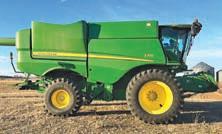 By Shelby Lindrud | West Central Tribune
By Shelby Lindrud | West Central Tribune
WILLMAR — The past few years have been a challenge for most people with the pandemic — and the economic and social fallout that followed close on its heels. The stress and burnout could be even more acutely felt on the farm, where families must also live with the whims of nature.

The theme of the 2023 Women in Ag Network Conference, held by the University of Minnesota Extension on Feb. 7 at the Willmar Conference Center, was Building Resilience on Your Farm and Family. Many of the breakout sessions, along with the morning keynote speaker and the panel discussion held at the end of the day, covered different aspects of burnout, resilience and tips on what women
can do to help build that resilience in their everyday lives.
“Resilience is growing through adversary,” said Monica McConkey, a rural mental health specialist who gave the keynote address to open the conference. Adversity, loss and burnout

With her history on the farm, McConkey knows about the adversity that can hit farms and their families.
“When we talk about adversity, it is different for everybody,” McConkey said. “Adversity is those things life throw at us, some of which we expect, some of which we don’t.”
Agriculture families may also have to deal with a lot of ambiguity in life which can be another cause of stress and adversity.


“In agriculture we deal with a lot of ambiguity. There is a lot of things we can’t control, there are a lot of things that can happen that aren’t super clear to us, why they happen or how they happen,” said Emily Krekelberg, Extension educator.

Krekelberg and Jenifer McGuire, professor and extension specialist, spoke about building resiliency in times of ambiguity. They specifically focused on ambiguous loss and how that can be a challenge to get through.
“In some cases, our grief cannot end, especially when we are dealing with something like ambiguous loss,” which Krekelberg defined as a loss without clarity. “That process can be extended for years; we can be grieving our entire lifetimes.”
Another issue that has been growing significantly during the last years has been burnout, both on the job and at home.

For family farms, it can impact both sides of life at the same time. According to a Gallup poll taken in 2021, 74% of respondents reported dealing with burnout, a 32-point rise from December 2019. While it is getting better, 67% of respondents now report feeling burned out, and society is nowhere near back to normal.

“We have a long way to go before we come back to this level that people feel we don’t have to worry about it,” said Christy Kallevig, an Extension educator who focuses focuses on leadership and civic engagement. She spoke on the myths of burnout and steps people can take to try and banish it.

Burnout is not an individual issue, and it doesn’t mean a person no longer cares about their work, Kallevig said.
“Burnout doesn’t mean we don’t care; it means we care too much. We are fully invested, fully engaged,” Kallevig said, adding burnout is an effect of chronic workplace stress and can only really be solved at the organizational level.
Drivers of burnout include things such as unsustainable workload, perceived lack of control, insufficient rewards and a lack of fairness. While burnout is a problem for everyone, it has been impacting women, persons of color and an entire generation more than most.
“It is also impacting millennials at a higher rate, so much so that millennials are starting to be referred to as the burnout generation,” Kallevig said.
There are ways to turn things around when you feel bogged down by adversity, grief and burnout. A lot of it boils down to changing how you think by not letting the negative thoughts and emotions cloud everything else.
“When we change how we are thinking, it changes the whole scenario,” McConkey said.
When discussing how to become more resilient, McConkey asks people to consider the palm tree. It can be pushed to near breaking during a hurricane, but the next day be standing tall among the damage around it. There are many characteristics of the palm tree — such as being flexible, letting go of things that could drag it down and surrounding itself with a support system — that people could use in their own lives.
“Resilient thinking is all about being problem solving focused, forward thinking focused. It is not blaming or thinking back 20 years,” McConkey said. “It is presentand future-focused, it is positive.”
To get through adversity and loss, one will need to be able to adapt to stressors and also prepare for future challenges. But to do so, you have to be willing to make the changes.






“It can be very hard to move forward with a new identity if you don’t have openness to change,” McGuire said.
Positive thinking is imperative to becoming more resilient. Even small positive thoughts can have a big impact on a person’s mental well being and ability to get through the tough times.
“A positive emotion doesn’t have to be big; it doesn’t have to be happy, happy, happy and filled with joy,” Kallevig said. “It can be peaceful, it can be calm an quiet.”
A person also needs to take time for themselves, no matter how busy they may be. McConkey spoke about doing those things that feed one’s soul.
“This looks very different for everybody. For some people it is the more traditional religious practice,” McConkey said. “For some people it is being in nature, being around animals, volunteering, listening to music.”
It is not just the mental side of things people need to take care of when building up their resilience. They also need to make sure they are sleeping enough and doing everything else to keep their physical self in good condition.
“We need to eat, we need to drink, we need to sleep and we need to move our body,” Kallevig said. “Those four things can make such a big difference.”
At the conclusion of the conference, a panel of women agriculture professionals shared their thoughts on adversity and resilience. Each of them had different definitions and outlooks on what resilience is to them.
“Having the ability, strength, creativity and awareness to get through the challenges in life and celebrate the
good times,” said Kathy Hupf, of CannonBelles Cheese in Cannon Falls.
Adversity can take the shape of many different things and the path to overcoming it is just as varied.
For Mary Jo Forbord, of Prairie Horizons Farm in Benson, the biggest and most heartaching challenge for her had been the death of her 22-year old son 13 years ago from a rare form of cancer. As she and her family grieved, Forbord said she learned how it important it was to have a purpose and a passion and to let go of things to make room for new opportunities.
“Try to go to the essence,” which Forbord explained is a mix of the physical, mental and spiritual.
At Strawberries Galore and More of Albany, owner Tammy Frericks said for her it was about getting a brandnew business off the ground and learning how to adapt and be assertive.
“We have learned and we have grown,” Frericks said. “Strawberry farming has made us a lot stronger.”
The messages that the speakers shared during the Women in Ag conference all seemed to boil down to a few main points — that adversity happens to everyone in some way, and that building up your resilience can help you overcome that adversity. And, no matter the challenge you are facing, it is important to be good to yourself.

“Be kind to yourself. Give yourself that space you need,” Kallevig said and allow yourself to care for you. “You have to stop and give yourself a breath.”
- CHRISTY KALLEVIG




SEBEKA, Minn — Perry Cuperus learned as a pre-teen growing up in Michigan that you just don’t pull rabbits out of a hat.
While on some ‘hare’ raising tours in Vietnam, Afghanistan and Bosnia, and numerous far flung journeys as a Seabee, rabbit raising was always the hobby he kept coming back to. At its peak, his family had up to 1,000 rabbits.

When Cuperus returned to the states and found a home near Sebeka, Minnesota, in about 1996, he continued his pursuits in raising livestock. That included various cattle, chickens and rabbits.
Keeping up with maintenance issues for all the different
animals in sub-zero Minnesota winter got to be more than Cuperus and his wife, Sue, wanted to do at their age. Their cattle grounds are now rented out to another producer, but the hobby of raising rabbits continues at the heart of the main barn at the Cuperus farm.
Their operation is not for everyone. These are snow white New Zealand rabbits. Some might consider them cute and cuddly, but ultimately — they’re raised for their meat.
“It’s a miniature hog operation,” Cuperus said, as he described his method of raising rabbits.
In an old hog barn, Perry, age 74, has retrofitted half the

barn for rabbits — about 200 does and 25 bucks — and another portion of the barn is for egg laying chickens and guinea hens. A gravity fed watering system has a water line attached to every cage. Feeding is done by hand, with stops at each rabbit. Cuperus continues to work with the animals daily and tinker in his sheds with ways to develop cost saving methods. That includes making his own cages and feeders from wire and tin he picks up on the cheap at area auctions.
It also involves making his own feed, largely with a base of grass clippings he harvests each year from a 10-acre field. He then mixes the grass with corn, soy and wheat grains and puts the mix through a pellet making machine. It’s allowed him to cut his feed costs in half.



“If you can’t make any money that way, you ain’t gonna make any money,” Cuperus said.

Cuperus credits his time in the service and as a contractor for teaching him a great deal about how to make things work.


“When you’re doing things, you learn things,” he said. Some may wonder, why meat rabbits? There’s not a booming market for rabbits. In fact, most consumers wouldn’t even consider it. Even finding a state-inspected processor is difficult for the niche product, as many just don’t want to deal with rabbits. It can be a high cost for a small product.
But there are groups of people accustomed to eating


rabbit and so, Cuperus continues to provide.
“New Zealand, that’s your Hereford of the rabbit industry, or Black Angus, ya know,” Cuperus said. He said you can feel the difference with these meat rabbits in that they have more meat on the loins than other breeds.

Dollar for dollar, Cuperus said you can’t get meat with higher protein. He said his rabbits average between 20-21% protein. Others concur.

“Rabbit meat has the highest percentage of protein per pound than chicken, veal, turkey, lamb, beef, and pork,” according to a Rutgers University study. In the study it points out that while rabbit makes up a significant portion of the diet for many consumers in other countries, U.S. consumers are standoffish. The study points out that rabbits could perhaps be an answer to world hunger. There’s a project going on in Haiti where Partners of the Americas is training farmers to raise rabbits to help the people produce quality food to combat hunger and earn money while doing it.
While commonplace 100 years ago, getting people eating rabbits today takes education, according to Cuperus. Perry and his wife Sue make trips to the local schools educating kids about raising rabbits. They bring with them the ingredients that it takes to make the pellet feed for the rabbits. They also bring along a rabbit or two to show off, which the kids enjoy. Sue even dresses up as the Easter Bunny to visit the kids at school. Talk of
butchering those fuzzy bunnies, however, is a subject the couple treads lightly around.
You don’t find too many people like Cuperus, who raise meat rabbits at this level of production. In fact, he doesn’t know anyone else who does it.
Perry has some ideas why. For one thing, they just aren’t a common item to find in your local grocery store, so most people have never even tried it. Even for the Cuperus couple, rabbit is not a big part of their diet, but

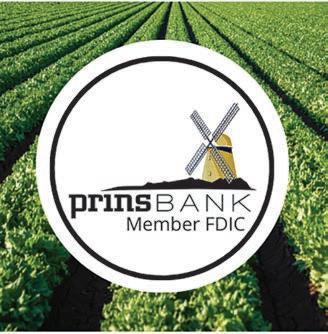



they do make various dishes including some rabbit chili they enjoyed last week from ground rabbit meat. Some customers enjoy getting some for the barbecue grill or slow cooking the lean meat.
We can’t hop over the fact that many people just can’t imagine eating something that many people see as a pet.
“The downsides of eating rabbit meat are mostly psychological,” according to WebMD.com. People may view them as a pet, even if they never had one as a pet.
Perry says rabbit meat is not quite like chicken, but it pretty much tastes like the seasoning that you put on it.
Even though Perry spent many years traveling and showing these rabbits, producing them for meat has also been a part of the process. He explained why:
• They have fast weight gain. It’s typically eight to 10 weeks to reach a processing weight of 4-6 pounds.
• Rabbits don’t take up a lot of space.
• The rabbits breed easily. Their gestation is about 28-32 days and they can have up to five litters a year. As the saying goes, “they breed like rabbits.”

Cuperus isn’t set on pushing the rabbits too hard, but he recognizes that some rabbits have eight to 13 young at a time, making them very high producers.
“The more you can push in and the more you can push out, the more you can make, or the more you can give away,” he said. Similarly, when the Cuperuses have more eggs than they can sell, they donate the rest to the local food shelf.
• Rabbit meat is very high in protein (about 20.2% protein) and low in fat. “Rabbit is a lean protein, which means that it’s good for your heart and won’t contribute to high cholesterol or heart disease,” according to WebMD.com.
• Rabbit meat can be a good meal, as it has a mild flavor that can be seasoned to taste and used in many dishes, including stews and stir-fries.
Even in his 70s, with 22 grandchildren and a growing number of great grandchildren to chase after, Perry still has dreams of improving his rabbit operation. As a tinkerer, he believes there’s always room for improvement.
If you think you’re going to make it big raising rabbits, think again, Perry said. But if you want to give it a try, it’s extremely low cost to start. Perry said, with the purchase of “a buck and a couple does” and a steady supply of food and water, you are well on your way to high production.




CHICAGO — U.S. farm incomes this year are expected to fall for the first time since 2019 amid higher production expenses, a drop in direct government payments and as cash prices for commodity crops and livestock ease back from historic highs, the U.S. Department of Agriculture reported on Feb. 7.
Net farm income - which is a broad measure of profits in the agricultural economy, according to the agency - is forecast to reach $136.9 billion in 2023 in nominal dollars, down nearly 16% from a year earlier.


The agency said the drop follows 2022 net farm income hitting a high of $162.7 billion, in nominal dollars, and $140.9 billion in 2021.







When adjusted for inflation, net farm income is forecast




to fall $30.5 billion, or 18.2%, in 2023 compared with a year earlier.
As farm incomes fall and expenses rise, economists say, that squeeze may make producers more cautious to try expanding their crop production operations, or to spend more on machinery or land, at a time of low global grain supplies.
Much of the income pressure in the crop sector came from lower prices of commodities sold - particularly corn and soybeans - and that drop in prices offset higher quantities sold, the agency said.

The USDA also noted declines in prices farmers received for sales of dairy, hogs, broilers and chicken eggs.
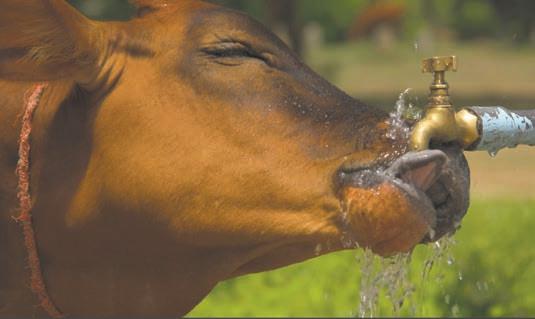
Cattle cash receipts are forecast to remain relatively stable in 2023.
Still, the USDA noted, this year’s net farm income is expected to be nearly 27% above its 20-year average, in inflation-adjusted dollars.




In nominal dollars, production costs overall are expected to increase 4.1%, USDA said. Interest expenses on operating and real estate debt, and livestock and poultry purchased, are expected to see the largest dollar increases.
Certain expenses, including fertilizer, fuel and feed for livestock, are expected to ease, the agency reported.

While farm sector debt is forecast to continue to increase, so is farm equity, mostly due to rising land and equipment values, said USDA Economic Research Service economist Carrie Litkowski.



















